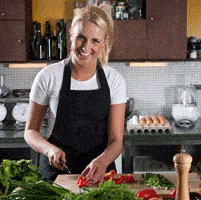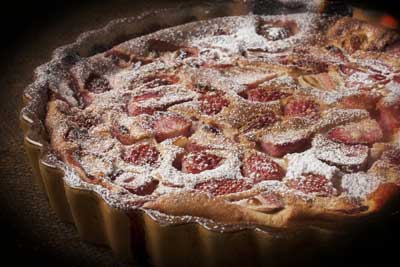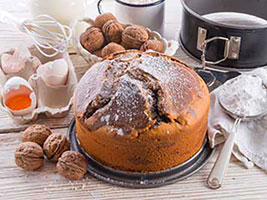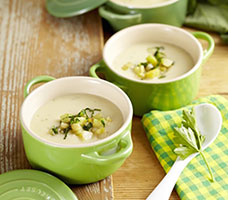Bake simply delicious cakes, loaves, muffins, and savory dishes cooking with stoneware products. And if you’re like my family, pizza cooked on the stone in the Primo outdoor oven is an easy, last-minute entertaining go to.
There’s a proviso, though. The first few times time you cook with stoneware bakeware, you need to make an effort to thoroughly season the pan so you continue getting the best results.
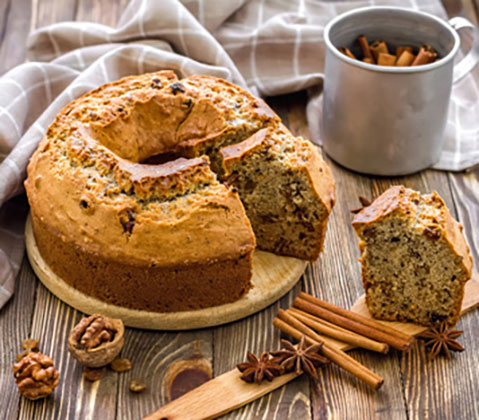
By the way, this post may contain Amazon affiliate links. This means that I receive a small commission, (at no extra cost to you) if you make a purchase through the links provided. Thank you for supporting Betty’s Bakeware.
What does seasoning stoneware mean?
‘Seasoning’ means creating a non-stick layer on uncoated stoneware baking dishes that’s built up gradually over time.
Why it’s important: It reduces the risk of foods sticking to exposed areas of stone that don’t have their own natural non-stick properties.
There are really 2 ways to season stoneware pans. These are
- through deliberate seasoning, and
- as a byproduct of everyday baking
Combining both methods is an excellent way to ensure that cooking with stoneware is simple, and to make sure your baked products slide out of the pan effortlessly.
Step by Step guide to Seasoning Bakeware
It’s very simple, and by choosing the right products and techniques, you can easily begin to build up that all-important non-stick layer on your stoneware baking dishes. Here’s how:
- Before getting started, wash your new stoneware pans with hot, soapy water. Although many types of stoneware is uncoated, it may be shipped from the manufacturer with a very thin coating to protect the stone during transit. You don’t know what chemicals are in that coating and we want it gone!
- Dry the pan thoroughly and apply a thin layer of oil to any part of the dish that may come into contact with food. The type of oil you choose is very important here. Note: It’s best to opt for an oil that has a high smoke point, as you’ll be heating the oil to a high temperature. Avocado oil, palm oil, hazelnut oil, and sesame oil all have high smoke points. Take into account the taste. You want something quite neutral. Coconut oil is a good choice, along with canola, vegetable shortening, or lard – a professional cook’s favorite.
- Use a clean, cotton cloth to gently wipe the pan and remove any excess oil, or any pools of oil. This excess is unnecessary and will actually increase the smoke output when the oil is heated. Never use paper towels for this. They’ll leave small tissue fibers on the stoneware that will become a part of the seasoning. You’ll be picking tissue particles out of your muffins for years to come!
- Place the pan into an oven that’s been heated to 200 degrees celcius, or 400 degrees farenheit. Leave in the oven for 30 minutes, resisting any temptation to open the door and peek. After 30 minutes, remove from the oven and allow to cool.
- Repeat the process 3 more times. This will build up a good non-stick layer and make your stoneware non stick and enjoyable to cook with.
How to Cook with Stoneware
The beauty of stoneware pans is that they’re incredibly versatile and you can bake practically anything at all in them.
When cooking with stoneware for the first few times, I suggest you opt to make foods that are just a little on the greasy side, as this will help build up the non-stick coating on the pan that we’ve been talking about.
If you have a stone muffin pan, be creative and try making a savory muffin filled with chorizo sausage, or anything that will release oils and fats when cooked.
The same goes for a loaf pan (try a bacon bread), or in a cake pan (add nuts with a high fat content), and a roasting dish (oven-cooked fries). Once you’ve successfully built up a non-stick layer, you can branch out in terms of what you cook in your stoneware.
*An uncoated or poorly coated dish is going to cause problems. Everything will stick, and your poor cakes will have no bottoms. Seasoning stoneware pans, and looking after that coating is very important for getting the best results from this bakeware.
Stoneware cooking should be easy
Both home cooks and professional chefs love cooking with stoneware because it’s so simple and produces such amazing results each and every time.
How to Clean Stoneware
- Allow your stoneware to cool down naturally after use.
- Don't put directly into cold water (or a freezer).
- Never wash with soaps that can strip the oils. Hot water should be all that's needed if your pans have been seasoned well.
- Don't use detergents as these can leave a soapy taste to your food.
- If there's any baked-on food residue, use a pan scraper on the surface and then rinse with warm water.
- Handle stoneware with care. Avoid stacking stoneware pieces as they can chip quite easily.
- Leave your stoneware to dry completely before storing or using again.
- Don't use chipped or damaged stoneware.
Seasoning well and proper care ensures that you’ll continue to get great results from stoneware products, year after year.
Stone Baked Pizza
There’s nothing like cooking with a pizza. This is a product I love. Whether you’re cooking in your kitchen oven or in a brick pizza oven you’ll get a great, light and crispy crust on the base.
The reason the baking stone makes such as difference to your cooking is because the stone has the ability to absorb the extra moisture and it distributes the heat evenly. Try using the baking stone for baking crusty bread and crunchy cookies as well as your pizzas.
To use: The stone should be added to a cold oven. Turn on the oven and heat the stone and add your pizza. The heat will then be distributed evenly while cooking.
If you’ve not used a stone before try it, and you’ll know exactly what I mean when you compare the texture of the base to that of a pizza cooked on an aluminium pan.
Pizza stones are available in a range of sizes and shapes. The square pizza stone is handy if you’re wanting to use it to bake bread, and I find a handy size to have along with the usual round ones.
If you’re short on time this is a stress free way to entertain. For casual nights and easy family meals I serve the pizzas on the stone. Add a big bowl of fresh, delicious, leafy Italian salad, loads of olives and different cheeses and some freshly baked ‘pane di casa’ and… ‘bellissimo’.

